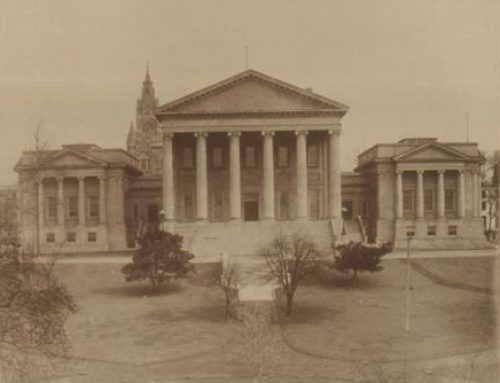Those of us in the right of way industry get a constant earful about the horrors of our profession. Politicians, members of the media and property rights activists all decry the concept of “eminent domain,” yet frequently ignore the importance of this tool to our economic vitality. A strong economy, jobs, and ultimately paychecks begin with an effective transportation infrastructure. And a transportation infrastructure does not exist without land acquisition.
Nowhere has this become more apparent than my home town. Suffolk, Virginia is a relatively small city of less than 95,000 residents and is located just west of its much larger neighbors, Virginia Beach and Norfolk. Several years ago, it undertook the widening of what seemed at the time to be a back road. The City expanded Nansemond Parkway from Shoulders Hill Road to the Chesapeake city line. The neighboring city of Chesapeake continued the widening of that same road from the city line to interstate 664.

Unfortunately, not all of the property required to complete the project could be obtained by voluntary acquisition and a number of commercial parcels were obtained through eminent domain. Some of the affected landowners were understandably unhappy that their property was affected, and the news media was more than happy to air their grievances. Fair enough. But the media’s focus was exclusively on the impacted landowner and not on the benefits that the project would bring to the city and its citizens. Not so fair.
Several years passed before release of an announcement that shook the town. Retail behemoth Amazon purchased 95 acres in Northgate Commerce Park in Suffolk at a cost of $4.6 million. Shortly afterwards, Governor Ralph Northam announced the retailer’s intent to construct an enormous fulfillment center at the site. Once completed, the four-and-a-half story facility will boast over 3.8 million square feet and will be the largest industrial building in the state and the second largest building overall, second to the Pentagon.[1]
But that’s not all. Amazon also announced that it would construct a 650,000 square foot processing center in neighboring Chesapeake. Together, those two developments would create 1,500 jobs in the two cities.
What does this have to do with the Nansemond Parkway widening project and eminent domain? Absolutely everything.
It was that expansion of Nansemond Parkway from Shoulders Hill Road in Suffolk to Interstate 664 in Chesapeake that was a deciding factor in Amazon’s decision to locate the enormous fulfillment center in the City of Suffolk and a large processing center in the City of Chesapeake.[2] The seemingly obscure transportation infrastructure project from 2017 will benefit the local economy for a generation to come.
According to Suffolk’s Economic Development Director, Kevin Hughes, it was a traffic impact study that influenced Amazon’s ultimate decision. “Because we expanded the intersection, because we ran it all the way to (Interstate) 664 … It works. I can pretty much assure you, if we had not done those things,” Amazon would not have developed these centers.[3]
Little Suffolk, Virginia is already home to a Target upstream distribution center which, along with the new Amazon fulfillment center, are the two largest office industrial buildings in the Commonwealth of Virginia.
The Nansemond Parkway expansion project required right-of-way acquisition. It also involved involuntary acquisition of some of the necessary property through eminent domain. But for this right-of-way acquisition and but for eminent domain, Amazon would have taken its business elsewhere.
Think about that.
________________________________________________________________________________________________________________________________________________________________________________________________
[1] According to the Suffolk News Herald story published Tuesday, March 10, 2020. Read the Full Story.
[2] Note that the Nansemond Parkway project was not undertaken for the benefit of any specific business.
[3] According to the Suffolk News Herald story published Wednesday, March 11, 2020. Read the Full Story







Leave A Comment